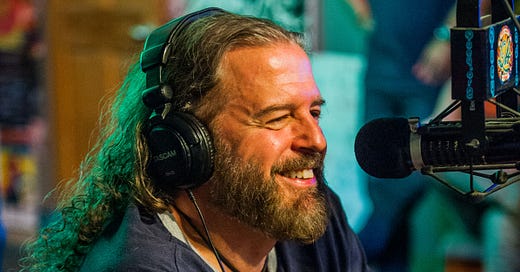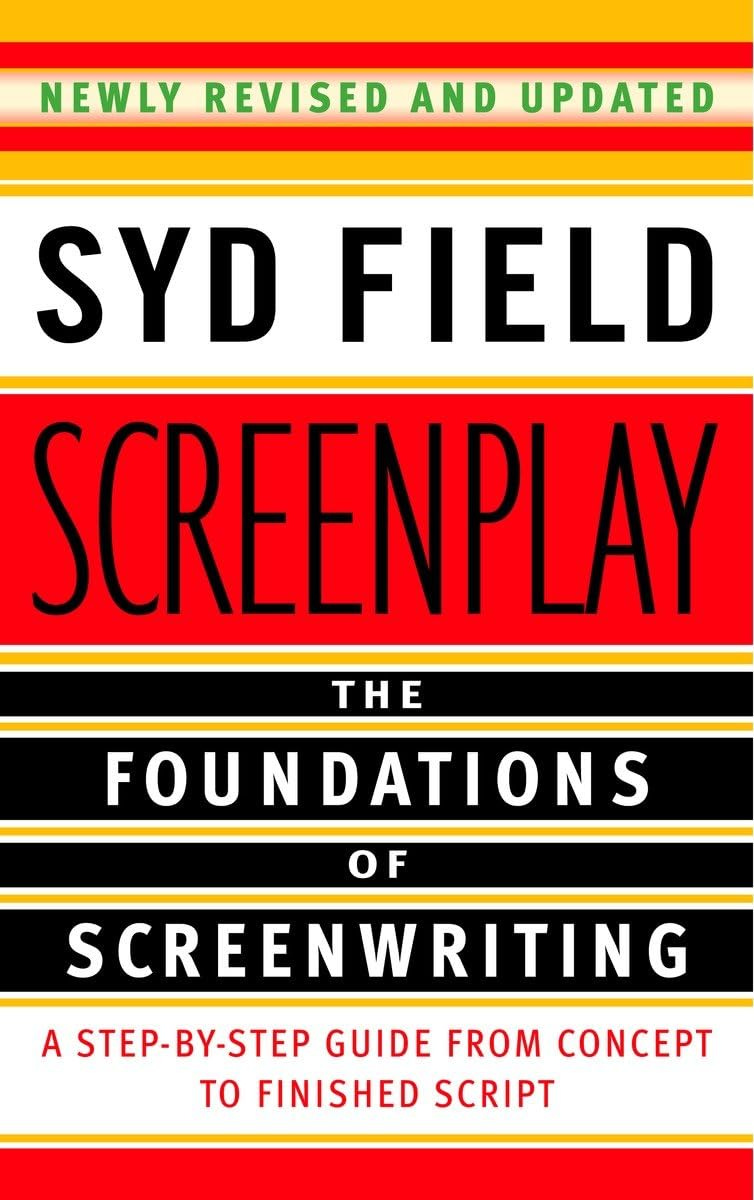Reflections on a Teaching Career #5
The widened opportunities while teaching at DePaul University
In the Fall of 2007, I was given three courses to teach at DePaul – all were Introduction to Screenwriting. No problem. Syd Field’s classic book Screenplay: The Foundations of Screenwriting was all I needed to build up the class. The one thing I didn’t plan for was the length of assignments. I had a couple of students in class that were entering the graduate program in Digital Cinema and needed a few intro courses before getting started. One of them was highly ambitious and ended up writing a screenplay that was over a hundred pages. This makes sense for anyone wanting to compose a “real” screenplay but, between the three courses, I had over 75 students enrolled. Similarly long submissions would be a bear to grade. As a result, I had a stack of scripts to read that went up to my knees… At the time, Frank and I had bought a condominium in the city so I could, in part, spend my time prepping and grading in Chicago instead of commuting out to the suburbs. I’d be grading into the wee hours of the morning to get what I needed scored for the next day’s classes. Needless to say, I soon learned to set a limit on the “intro” screenwriting assignments!
By the following Fall I was offered to teach courses such as Film Philosophy and History of Film Editing. My department had a great system of allowing faculty to pick from among dozens of courses to teach each term. Full-time faculty got first crack at everything but because the program was growing so rapidly, there were ample chances to teach a wide variety of courses. I always picked what sounded interesting and then went through the tough work of developing a syllabus and the content for each course. This usually involved creating a lot of Power Point presentations and required assignments. We were given full autonomy to structure our courses as we saw fit, which made the task truly challenging but equally rewarding.
In the Fall of 2008, my program director Matt even offered me up to the Communication Studies department to teach a graduate course on New Media. To say that this was daunting is an understatement. Graduate students are a whole other ball game. They mean business and are willing to do what they need to succeed in their courses. I kept this one loose for a lot of discussion and detailed student presentations in which students were essentially teaching for about an hour each. I even invited in a few key speakers, including Adam Kempenaar who was then making a name for himself with a major Chicago-based podcast called Filmspotting – which is still thriving today. I thought the course went off well although it was the only time I ever taught it. Developing a new course is always better if you can teach it more than once.
My primary department, Digital Cinema, also offered several opportunities to teach special topic courses. In addition to the Alfred Hitchcock and Woody Allen courses I had developed and taught at College of Du Page, I created new classes on maverick film directors and The Coen Brothers, and later Paul Thomas Anderson and Richard Linklater. I also created one LGBTQ films, which was something I’d always dreamed of doing.
There were about twenty students in that class. During the first session I’d asked how many students had seen Brokeback Mountain and several hands went up. I also asked how many had seen Blue is the Warmest Color and other hands went up. I commented, “Ah! All males raised their hands for Brokeback Mountain and all females for the lesbian film.” At the break a student named Veronica came up to me in tears saying, “You referred to me as a female, but I am transgender!” I apologized profusely. Of course, I had no idea the student was transgender. Since this was before selective pronouns were common in college classes, Veronica asked I refer to her as “they.” Okay, no problem, although I was a little confused at the time as to how one person could be a “they.” This was new to all of us. Interestingly, Veronica would mention in class that they had no plan to actually transition and would regularly use the women’s restroom. It was confusing to me as to how this classified someone as transgender but, again, this was not something I’d not encountered before, and the university didn’t exactly have classes or seminars on how to work with transgender students. It was a real eye-opening moment for me.
The problem with Veronica was that they hated all the films shown in the course, often saying that they weren’t diverse enough. For instance, I showed a film called Edge of Seventeen (1998) which centered on a white suburban male student coming out. Veronica felt the film was not representative of the wider LGBTQ population. However, the gay son of a good friend of mine was also taking the course. He was a white, suburban, gay male and he really liked the film. Clearly, he related to it. Week after week I endured Veronica’s dissatisfaction with what we were covering. Coincidently, they were also a student in my Film Philosophy class that term and complained about a few of the topics discussed in that course. By about week seven, Veronica was emailing me that they had various issues which would prevent them from coming to class. I lifted my usually strict attendance policy and let Veronica complete the rest of both courses online. I needed a rest from all that negativity.
The overall student body was pretty great to teach though. Unlike the community college students I was teaching simultaneously at Moraine Valley, most of the DePaul students were mostly driven to succeed – and they should be, given the amount they were paying for a private university’s tuition. It was also a thrill to have upper division students in some of my courses. They were usually dedicated even if they weren’t film majors.
Connecting with other faculty was a bit harder to do though. DePaul gave us adjuncts our own individual offices which we’d share with others. Office hours were required so the scheduling of those offices was based on which faculty members were scheduling their hours at what times. There was rarely any overlap. It was nice to have a quiet place to go between classes and while students didn’t regularly show up to those hours, I did get to know several of them who preferred to hang out and talk about their lives and career plans. I had even started a podcast called “Palcinema” in which I’d discuss a major film release with one of my students. We’d record some of the episodes in the office. This was a far cry from having only a shared adjunct space with sometimes five or six other faculty members at Moraine Valley. We rarely were able to interact with students there or have quiet time to grade or prep. Although, we did have some good times in that office!
There weren’t a lot of opportunities to interact with other adjuncts or full-time faculty members at DePaul, however. There were regular meetings for the full-timers, but they were always on Fridays when none of the adjuncts ever taught on campus. Maybe one or two social events were planned but these were also during off days. So, generally I kept to myself and embraced this chance I had to teach my favorite subjects with little interference from the higher ups. Sometimes I’d be teaching six to eight courses a term between DePaul and Moraine but all of it was better than the previous nine to five jobs I’d had in higher education. I loved the freedom, independence, and fulfillment it all provided.
Next Up: Making Films with Students







Oh Syd Field. We used his book (probably the 1st edition) in my screenwriting class at UCSC back in 1987! It’s crazy how ubiquitous his books have become! As a rebellious (without a cause) college kid I rebelled against all forms of structure, especially the 3-act structure. I still feel like it’s a very limited view of screenwriting. It’s like the 5 paragraph essay. Fine for getting good grades in school but not especially pertinent in the real world. But what the hell do I know about the real world. I never sold a script. I’m sure that the formulaic films follow the 3-act structure, but those types of films bore me, usually. But at the same time, having something relatively simple to follow when first learning is helpful so that breaking the formulas comes from a place of understanding.
All that said — I feel for you, and all screenwriting (and novel) teachers, who have to read 100 page scripts from 75 students! Eeek! That’s nuts. Especially when, I imagine, most of them range from problematic to awful. And now with AI, I bet there’s a whole added layer of having to determine the legitimacy of the scripts on top of everything else….
I remember the whole Veronica situation. I assume many teachers, high school and college, were experiencing this at that time when it was all new or newly in the public discourse. And, yes, you were often slammed with classes and grading. That will make retirement that much sweeter!